Super Tough and Spontaneous Water-Assisted Autonomous Self-Healing Elastomer for Underwater Wearable Electronics
- PMID: 34519441
- PMCID: PMC8564429
- DOI: 10.1002/advs.202102275
Super Tough and Spontaneous Water-Assisted Autonomous Self-Healing Elastomer for Underwater Wearable Electronics
Abstract
Self-healing soft electronic material composition is crucial to sustain the device long-term durability. The fabrication of self-healing soft electronics exposed to high moisture environment is a significant challenge that has yet to be fully achieved. This paper presents the novel concept of a water-assisted room-temperature autonomous self-healing mechanism based on synergistically dynamic covalent Schiff-based imine bonds with hydrogen bonds. The supramolecular water-assisted self-healing polymer (WASHP) films possess rapid self-healing kinetic behavior and high stretchability due to a reversible dissociation-association process. In comparison with the pristine room-temperature self-healing polymer, the WASHP demonstrates favorable mechanical performance at room temperature and a short self-healing time of 1 h; furthermore, it achieves a tensile strain of 9050%, self-healing efficiency of 95%, and toughness of 144.2 MJ m-3 . As a proof of concept, a versatile WASHP-based light-emitting touch-responsive device (WASHP-LETD) and perovskite quantum dot (PeQD)-based white LED backlight are designed. The WASHP-LETD has favorable mechanical deformation performance under pressure, bending, and strain, whereas the WASHP-PeQDs exhibit outstanding long-term stability even over a period exceeding one year in a boiling water environment. This paper provides a mechanically robust approach for producing eco-friendly, economical, and waterproof e-skin device components.
Keywords: flexible wearable devices; light-emitting diodes; perovskite quantum dots; underwater electronics; water-insensitive self-healing elastomers.
© 2021 The Authors. Advanced Science published by Wiley-VCH GmbH.
Conflict of interest statement
The authors declare no conflict of interest.
Figures
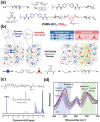
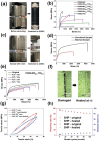
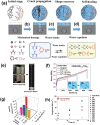
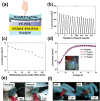
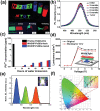
References
-
- Chortos A., Liu J., Bao Z., Nat. Mater. 2016, 15, 937. - PubMed
-
- Liu Y., He K., Chen G., Leow W. R., Chen X., Chem. Rev. 2017, 117, 12893. - PubMed
-
- Wang S., Oh J. Y., Xu J., Tran H., Bao Z., Acc. Chem. Res. 2018, 51, 1033. - PubMed
-
- Kim S. M., Jeon H., Shin S. H., Park S. A., Jegal J., Hwang S. Y., Oh D. X., Park J., Adv. Mater. 2018, 30, 1705145. - PubMed
-
- Tee B. C., Wang C., Allen R., Bao Z., Nat. Nanotechnol. 2012, 7, 825. - PubMed
Publication types
MeSH terms
Substances
Grants and funding
LinkOut - more resources
Full Text Sources
Research Materials
